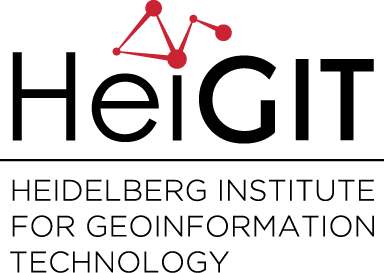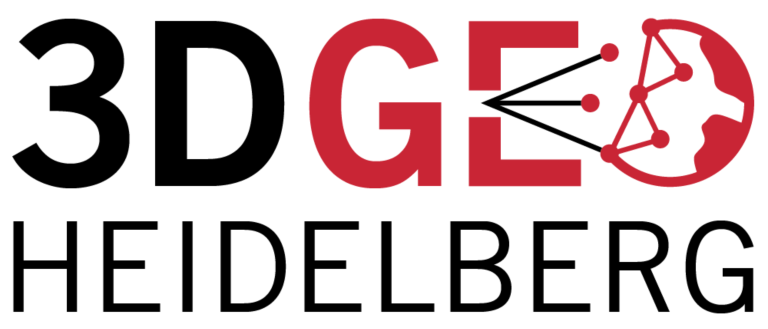Category: OSM
-
Global analyses are ohsome
We, the Big Spatial Data Analytics Group at HeiGIT have ohsome news to share: From now on, you can send your requests to our global ohsome API instance. So far, we’ve had a public instance for Nepal and Germany, but now you can analyse OSM’s history globally. Additionally to the API, we also have a global dashboard instance. You choose any…
-
Neues mFUND Project: Temporal Access Restrictions for Dynamic Ultra-Flexible Routing – TARDUR
Problemstellung Bis dato wird eine wichtige Eigenschaft infrastruktureller Straßennetzdaten wie OSM in noch keiner frei verfügbaren Routing Anwendung voll ausgenutzt: zeitliche Restriktionen auf Straßen und Wegen, wie etwa tageszeit- oder saisonale Fahrbahnbeschränkungen. Dies ist unter anderem für Transport-Logistik-Firmen für ein effizientes Flottenmanagement (z.B. zeitlich variable Fahrverbote für Lastkraftwagen) von Bedeutung, aber auch im Hinblick auf eine…
-
The influence of the OSM mappers’ cultural backgrounds on their mapping behavior
In order to analyze the quality of OSM data, a study at GIScience Heidelberg investigated the influence of the mappers’ cultural backgrounds on their mapping behavior and hence questioned the general validity of semantic (street) classifications in OSM. Nepal was hit by a series of earthquakes in April 2015. The OSM community quickly reacted by…
-
Empower Humanitarian Mapping with Deep Neural Networks to Detect Human Settlements
Recently, earth observation by satellites has shown great capability in supporting a range of challenges such as disaster assessment, agriculture monitoring, and humanitarian mapping. MapSwipe, as a humanitarian mapping app, provides a crowdsourcing platform to collect volunteered geographical information (VGI), in order to generate the demanding base map of human settlements for better planning of…
-
Hello world, openfuelservice!
In addition to our already exciting and fascinating portfolio of open source software we now offer openfuelservice which is a new and very experimental advance in the world of fuel consumption and emission of cars. In the recent political and social discussion around these topics it became clear, that it is still hard for individual car…
-
New OpenRouteService QGIS Plugin
Finally there is a new version of the QGIS plugin for OpenRouteService: ORS Tools. It gives easy access to our directions, isochrone and matrix API’s from within QGIS. The old plugin OSM Tools plugin has been deprecated due to its name being too generic. However, the name is not the only thing that changed: Create…
-
Plausible Parrots – HeiGIT’s OSHDB Supports Research in Citizen Science Data Quality
In the GIScience research group at Heidelberg University, a recent PhD research project by Clemens Jacobs has been looking into the data quality of citizen science observations of organisms. This research aims at using geographic context as an information source for estimating the plausibility of an observation, e.g., of a bird, which was reported to…
-
How to become ohsome part 3: Identifying different mapping schemes
This is your first blog of the ohsome series? Before you might be confronted with any potential spoilers, you should better check out the first and the second part of this blog series (or the intro to the idea and general architecture) to be on the safe side and up to date with the current content. So…
-
HeiGIT and German Red Cross representation at DLR Humanitarian Technology Days 2019
Last week, Michael Schultz (GIScience Research Group) attended the Humanitarian Technology Days 2019 that was organized by the German Aerospace Center (Deutsches Zentrum für Luft- und Raumfahrt, DLR) as a representative of the GIScience Research Group/ HeiGIT and of our collaboration with German Red Cross. For two days, around 80 scientists, humanitarian actors and funding…
-
The future of OpenMapSurfers tiles
OpenMapSurfer is the name of a web tile service based on OpenStreetMap data developed by Maxim Rylov and hosted by the Heidelberg Institute for Geoinformation Technology. The map style is a general purpose “basemap” layer featuring some unique properties, such as high cartographic quality label placement, see floor bathymetry, and a pleasant warm color scheme.…
-
How to become ohsome part 2: Comparing different regions based on their attributive completeness of OSM data
Welcome back to the second part of the blog series how to become ohsome. If you have not read the first part yet, better go and check it out now. It explains how you can create an ohsome visualization of the historical development of the OSM data from a city of your choice. This second part shows how to…
-
Spatial conceptual compliance analysis with the OpenStreetMap History Database (OSHDB)
In a previous blog post we performed a conceptual compliance analysis between OSM data and several tagging-guidelines using the OSHDB API. The results were visualized in a line chart, comparing the different compliance ratio over several months. The following analysis focuses on a spatial representation of the conceptual compliance. It is conducted for the “iD-editor”…


